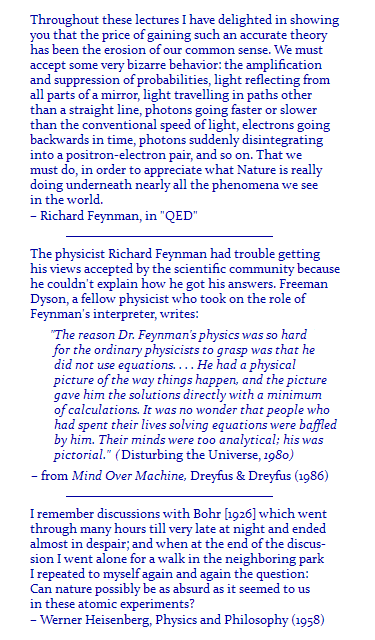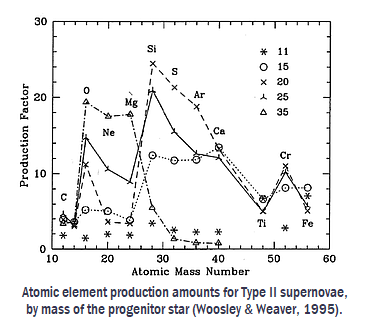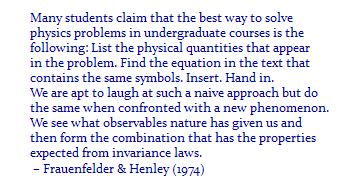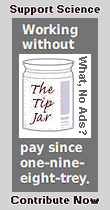
I first got interested in science via an interest in photography, back when this was based on silver chemistry. When I was 10-11, my dad brought up a box of photo processing equipment that I'd never seen before from down in the basement and showed me how to develop B&W film in the bathroom.
Seeing the developed negatives was magical. At that point people just dropped their exposed film off at the drugstore and hoped the pictures "came out" when they went back a few days later to get the prints. But everyone seemed to know someone who was an enthusiast ("good with cameras"), a hobbyist who had a home darkroom. After a couple of years trying a Polaroid camera (no negative) I switched to the more traditional and common regular film camera.
By the end of junior high I had a small darkroom under the stairs leading down to the basement, and was starting to get into making prints from my negatives, which required an enlarger, more space, and a bunch of other equipment (trays, safelights, a print dryer, etc.). This was also about the time it first became possible to do color at home, which I got into by the time I'd finished high school.
But I was not that much into science to begin with, beyond growing up when we were going to the Moon and were going to have people on Mars by 1985. In fact I spent my youth in sports and had a college athletic scholarship. Early in grade school I was discovered to be about the fastest kid around, and like they say in the NFL "you can't train speed", so I tried just about everything at one time or another. I was anything but the TV trope of the whiz kid, boy genius, brainy kid, or prodigy. I never won the Science Fair. I did okay in math, but it was more due to the same thing that led to success in sports: putting in the training and practice time, i.e., doing the homework.
I went into high school chemistry with the same trepidations and predispositions as anyone else, fearing it would be both boring and difficult. But it turned out not to be. My experience mixing photo developing solutions gave me a kind of a head start on lots of the basic, simple stuff. And I was curious about how the photo magic worked, so this kept me interested and motivated.
I did well in the course but was as surprised as anyone when my College Board score came back an 800. I came out of the test thinking I'd done okay, but that would have meant anything solidly in the 600's. A score starting with a "7" would have been phenomenally good. There were a couple of really smart guys in my class, genius types who seemed to already understand everything easily and didn't have to work at it, but I wasn't one of them.
So the next year I took physics, which I didn't like as much as chemistry. I could plug numbers into equations and get the right answer, but it more generally felt like a way of thinking that was distinctly different from what I was used to, from what seemed comfortable. Physics presented a new way of thinking about things.
It was about this time that I first got into science fiction literature, like so many others, and discovered Isaac Asimov. The public library had a ton of his books; he wrote over 500 of them all told by the time he was finished, and I think back then he was closing in on the unimaginable number of 200 books. I quickly gravitated more towards his non-fiction. One subset of this was a monthly science fact piece he wrote for a magazine. These self-contained little science lessons and essays on various new and interesting things going on all across the sciences were occasionally collected together into books, and at one point I got to gobbling up all the local library had. They were at the perfect level for me then. They had such names as The Left Hand of the Electron, after the title essay, which was on symmetry breaking in weak nuclear interactions.
By the time I was a high school senior I was taking AP chemistry, having also somehow managed to get an 800 on the Physics College Board exam, a big confidence builder, especially because I didn't think I was very good at physics, and really didn't want to see another physics class.
[Part of my success with standardized tests was no doubt the result of warming up beforehand with the math card game Krypto. As kids, we all grew up playing lots of both card and board games. My parents were part of a revolving neighborhood bridge game, and early in high school a math teacher taught us how to play bridge because it sharpened basic math and logic skills. A number of us spent a lot of our free time in high school playing cards; not just bridge, but also hearts, spades, and several kinds of poker (draw, stud, and guts). At least a few of the fathers were all in favor of us learning how to play poker, and for awhile there was a game hosted at someone's home about every other week or so. Sometimes there were ten or a dozen players.

Krypto was introduced by a 5th grade math teacher and was even better at drilling basic math skills. It was a deck of fifty-two cards like any other but it had no suits, and the numbers ran from one up to twenty-five. There were more of the lower numbers than the higher ones: three each of the numbers one to nine (27 total), two each from ten to eighteen (18), and just one of the cards from nineteen to twenty-five (7). This is different than I've seen the deck described elsewhere, so I may be recalling incorrectly.
In a game, five cards were dealt face down to each player and then a common or target card was dealt face up in the middle of the table. The goal was to use the four basic math functions (addition, subtraction, multiplication, and division) and each of numbers on the cards in the hand once (and only once) to solve for the target. The first one to do so won that hand and got points totalling the six numbers on the cards added together. This made the high numbers more valuable, but they're more difficult to work into a solution.
A very simple example would be a hand consisting of the cards 1, 9, 11, 13, and 21, with a target of 7. Well, 21-13=8 and 11-9=2, so then 8-2+1=7. The total score is 62 points. Games could be played to a winning total of 250 or 500 points depending on how long everyone wanted the game to go.
When the game came out, the makers had done computer calculations showing there were some small number of hands that were insoluble. If someone thought they had one, they could declare this to be the case if no one had already won the hand the usual way, and this constituted a challenge to all the other players to try and solve it. If someone could then they got the points and the person with the erroneous idea about their hand got penalized the same number of points. Otherwise I think they got double or triple points. The better one got the fewer the seemingly insoluble hands. If someone declared having a winning hand and then either got the math wrong or got confused and couldn't explain the solution they'd also get penalized, and then the hand would continue.
Well, we played this as part of math class but I think within a year or so everyone's Krypto decks went in a drawer and were forgotten because it wasn't that much fun. I then ran across mine again probably late in junior high and started playing, because you could also play it solitaire, just for the challenge/fun of it or to kill some time for 10-15 minutes (enough for a couple of hands).
It was by doing this occasionally that I discovered Krypto was great for getting the gears in the brainbox whirring and up to full operating speed. So I'd use it to warm up before standardized tests, since there really wasn't any specific material to review or bone up on; you didn't know what was going to be on the test. There was no 'test prep' business then, so this was it. With a little experience one got good at spotting Krypto hands that were going to be difficult, and it turns out to be a useful skill in standardized test taking to be able to spot the difficult questions. Because of the timed nature of the test, one wants to set these aside quickly and come back to them later to work on them after racking up the easy scores. Sometimes just coming back to a question after 20-30 minutes causes one to see it entirely differently. So I really credit Krypto with helping me score double-800's.]
At the end of the year there was a college scholarship money competition among all the high schools in the region, put on by the local chapter of the American Chemical Society. There was enough industry in the major league city where I grew up that it was big enough to be able put this on every year. Each school got to send its two top chemistry students, and I got chosen as one of our representatives. There was a two or three hour exam one Saturday afternoon at a local college to whittle the field from 50-60 down to six finalists for the three prizes, the top one of which was maybe double the annual in-state tuition at State U, maybe $10K or a little more in today's money. Not quite a full four-year scholarship, but at least about half of one.
So both me and my truly genius-grade classmate made the cut, which
meant we got to go in a few weeks later for one-on-one interviews with
the ACS members deciding the winners, five or six if I recall correctly.
A day or two before my interview I'd read one of the Isaac Asimov essays
about some of the earliest supernovae computer models, derived from code
 used to simulate thermonuclear weapons ("H-Bombs" --
the
Cold War was the flip side of the Space Race), and how its
nucleosynthesis physics was correctly producing relative abundances
of the elements more or less in line with the actual abundances across
the periodic table. I thought this connection between astronomy, nuclear
physics, and chemistry was about the coolest thing ever.
used to simulate thermonuclear weapons ("H-Bombs" --
the
Cold War was the flip side of the Space Race), and how its
nucleosynthesis physics was correctly producing relative abundances
of the elements more or less in line with the actual abundances across
the periodic table. I thought this connection between astronomy, nuclear
physics, and chemistry was about the coolest thing ever.
If chemistry was my first interest in science, astronomy was second, and this fused the two together, so to speak.
This turned out to be the wrong thing to be excited about during the interview, though I didn't learn the reason until the awards dinner a month later. The scholarship winners all had a fairly pat set of objectives: majoring in chemical engineering and then working for, say, a tire company, making better, safer tires for everyone. Nothing wrong with that. If I'd been thinking along those lines I would have gone on about learning all I could regarding the chemistry of photography and then going to work for Kodak, making better color films. But Asimov had gotten me fascinated in science as an intellectual pursuit in its own right, aside from what wonderful things it might produce almost as a side effect. So I wasn't even sure I was going to major in chemistry, since I'd given astronomy some consideration in my choice of schools.
The whole thing wasn't a total bust: I did get a copy of Lange's Handbook of Chemistry with my name stamped in gold leaf on the cover out of it, which has seen a lot of good use over the years.
My trajectory in chemistry didn't last very much longer. When I first got to college I checked in with the undergrad adviser in the Chemistry Dept. -- only to find out they wouldn't take my "5" (basically an "A") on the AP Chemistry exam. -Something about it not being fair to get both HS and college credit for the same class. This seemed like a pretty lame excuse. I think his job was just to put behinds in seats for the bean counters.
I had the same problem cashing in my AP Calculus score. Eventually I learned that if you took (and passed) a course farther along in the sequence, you could fill out some form and the campus grade computer would give you credit for the prerequisite course(s), which I eventually did in the case of my Calculus AP score. A friend I made in the dorms practically the first day there learned this too late, and not from anyone in the Math Dept.; when they wouldn't take his AP Calculus score he got finagled and funneled into taking the Honors Calculus sequence -- which was agonizing because he wanted to go into aeronautical engineering, not extremely abstract mathematics.

The net result for me after all this was that I went off and took physics rather than re-do freshman chemistry. This turned out to be a good thing to do as by happenstance I got to have Dr. Lowell Brown for a year. At that time he was closely collaborating with the people at SLAC (Stanford Linear Accelerator) who were doing deep inelastic collisions and discovering the J/psi meson (J/Ψ, or psion), which led to the "November Revolution" (in high energy particle physics) and half of the Nobel Prize the next year (1976) -- the other half going to the team at Brookhaven National Laboratory who had discovered a particle at the same time which, after they'd figured everything out, turned out to be the same particle (hence it's two names). The J/Ψ is the simplest and lowest mass form of "charmonium", because it consists of a charmed quark and a charmed anti-quark. (All mesons are thought to be quark/anti-quark pairs.) Dr. Brown was really into this. In fact he was so excited about what they were doing he often inadvertently blew off our whole hour of lecture, instead digressing on the very latest developments concerning what they were struggling to figure out at that moment. The charmed quark is massive, weighing almost a third more than a proton (which itself is composed of three other quarks). On June 30, 2020, people plowing thru Large Hadron Collider data announced the discovery of a new particle, called X(6900) because it has a mass-energy of 6,900 MeV; it's an example of a tetraquark -- something made up of four quarks, not three. This is literally a new form of matter. The clue to this is that it decays into two J/Ψ mesons, so it's presumed to be made up of two pairs of a charmed and anti-charmed quark.
After that I took more physics courses while also drifting more towards astronomy, since I had the physics and math prerequisites, where they were much more welcoming than in chemistry. I ended up never taking another chemistry class.


Back to: [ Main VISNS Page || Backstory #1 || Backstory #2 ]